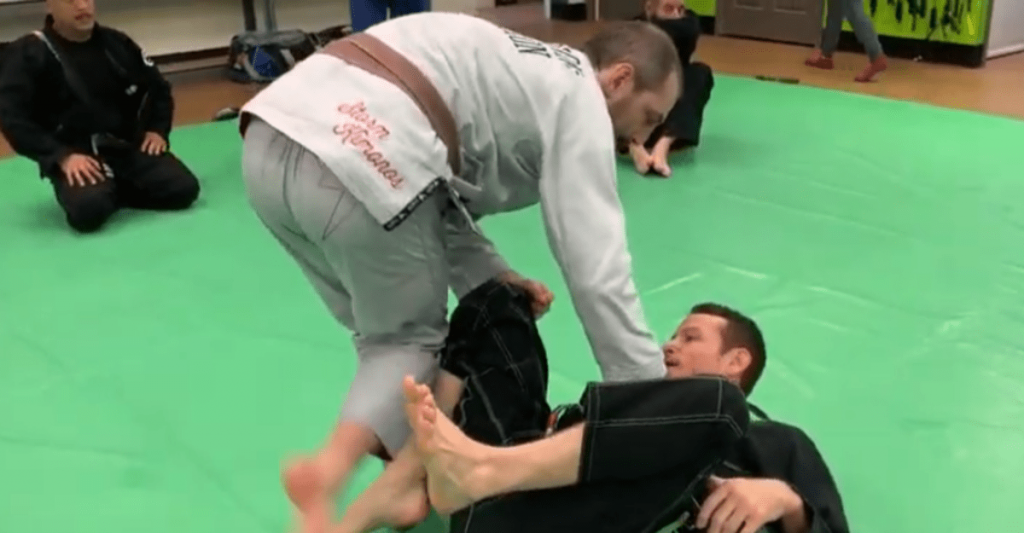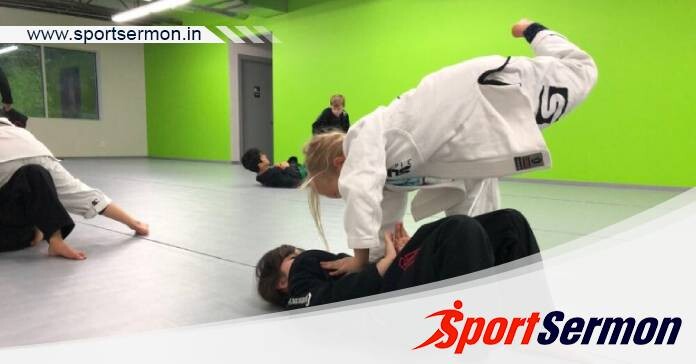BJJ X-Pass: One of the fundamentals of learning Brazilian Jiu-Jitsu is guard passing. Overcoming an opponent’s defences is a talent that is always beneficial. It enables you to take advantage of the opponent’s defensiveness and push forward your position. Acquiring knowledge of the most crucial guard passes becomes essential for practitioners as they advance in skill. Today, we’ll go over the tried-and-true BJJ X-Pass, a timeless method for getting past the guard.
Taking The Guard Off
Let’s discuss what passing the guard means before defining the real technique. To go beyond the opponent’s defences, which are their frames and legs, is to pass the guard. Opportunities to use pinning tactics like side control, mount, and north-south are created when the guard passes. Additionally, it allows the passer to switch to other submissions as they become available.
Playing the guard is a key skill that BJJ practitioners are taught, so much so that it is included in the first week of instruction. One fundamental type of guard we are taught early on is the closed guard. Whichever kind, the guard emphasises the need to utilise your legs as a barrier to stop an opponent who is charging at you. When you successfully defend against a powerful guard passer, you prevent them from attacking, which keeps you safe.
This implies that, regardless of level, being able to get past regular guards is an essential talent for the guard passer. In the first several years of instruction, it is advised to study the X-pass, a passing method that has been in use for decades.
You might also be interested in reading this: Tips For Mastering The BJJ Imanari Roll
How The X-Pass Works?

The cross-shaped “X” formation formed by your arms and legs when performing the technique is how the X-pass got its name. The X-pass is fundamentally a standing pass that calls on timing, quickness, and awareness of your opponent’s reflexes. The goal is to get around your opponent’s legs by making an angle and moving their legs aside with your limbs. It is similar in setup to the bullfighter or toreando pass, but it is executed somewhat differently.
X-Pass In Operation
Black belt contender Renato Migliaccio explains the X-pass technique in this video. He notes that there are numerous mechanical parallels between the toreando pass and the X-pass. He forces the opponent to lie supine at the beginning of the technique by pushing them to their back. When he uses his left hand to hold the opponent’s trousers, he often places his right hand close to the opponent’s hip. He then pushes the opponent’s leg to his left by kicking his leg out. He will be able to go to the side with some space created by doing this. He often goes to knee on belly to complete the pass from this position.
The X-pass has the advantage of being a relatively easy method with minimal steps to learn. Renato recommends working on both sides of the guard pass; you can even incorporate it into your fitness exercises.
X-Pass To Back Take (With a Single Strap)
The X-pass also has the significant advantage of being easily linked to other offensive sequences, such as the back take. We examine a straightforward backward transition from the X-pass in this video. First, collar control must be established from the outset. Start in your favourite guard passing sequence. You can pass from headquarters or from any other position as long as you can keep your collar on hold.
Proceed to pass the guard and let the opponent select between passing or going to the turtle. If the opposition does not move to the turtle, you may obtain the side control pin with ease. Now that you have control of the collar, you may take the back of your opponent turtles. This routine works on all levels and is surprisingly effective.
Including X-Pass in Your Game

It is imperative that you practise the X-pass before incorporating it into your guard passing routine. Since the toreando and X-Pass begin from almost the same location, many novices misunderstand them. Isolating new approaches and practising them again until you grasp every little detail is a smart idea. Because you must maintain the correct body position at all times when performing the X-Pass, it is imperative that you learn the initial approach to the pass’s completion.
You should be able to employ the X-Pass in conjunction with your other passing methods by creating little combos of techniques from your original passing posture. The ability to methodically move between positions according to how your opponent responds is crucial in this situation. This indicates that in terms of primary posture and gripping mechanics, the passing strategies you should select are rather comparable. Excellent choices include the previously stated toreando pass, throw by, knee cut, and other standing moves.
Finally, be receptive to criticism from your coach and training partners, particularly on how you are using the X-Pass. Little errors are frequently overlooked because we are unable to perceive the big picture. You can get unbiased information that will undoubtedly help you get better on the mats by asking your instructor and the others you roll with for honest comments. Please don’t take whatever they say personally and have an open mind.
In summary
Any BJJ practitioner’s toolbox should include the X-pass. Leverage, timing, and mobility are all used to efficiently get past an opponent’s defences. The X-pass might appear complicated at first, but with careful repetition, it should become a fluid and natural element of your play. As with any technique, the secret to perfecting the X-pass is to comprehend its physics, put some serious effort into it, and use it confidently when sparring. The X-pass may significantly improve your guard passing ability when these components are in place.

